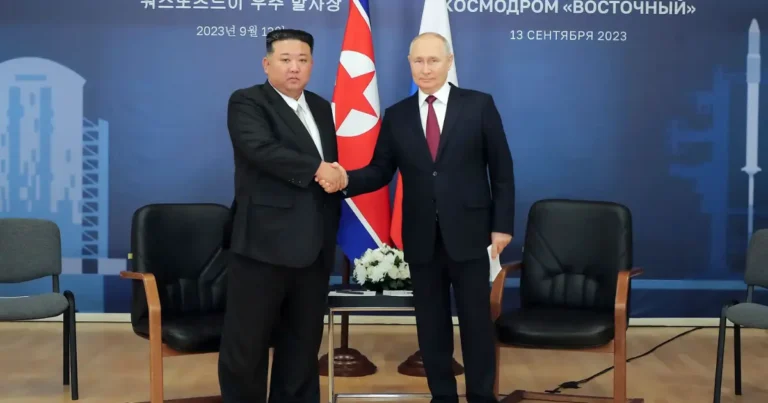Election Results in Pakistan: Continuing the Democratic Process
Pakistan is holding general elections today to elect new members to the National Assembly and Provincial Assemblies. As results begin to come in throughout the day, voters are enthusiastically participating in this important democratic process. The initial trends point to potential close contests between major political parties such as the PTI, PMLN, and PPP. As the Pakistan Election Commission tallies the votes, today’s election results will determine the composition of the next government.
Following a brief delay, polling for Pakistan’s general elections began early this morning across all provinces to elect the 15th National Assembly and four provincial assemblies. More than 105 million registered voters in Pakistan will exercise their democratic right to vote, influencing the next government. Polling began at 8 a.m. PST and will continue until 6 p.m. PST in most constituencies.
Despite delays in some areas, citizens waited patiently outside polling stations in the early hours. With COVID precautions in place, such as social distancing protocols, polling has been relatively peaceful, with only minor skirmishes. While the final results will be announced in a few days, TV channels have already begun making predictions based on early trends. As ballot counting continues, everyone in Pakistan is glued to their screens, waiting to see the emerging election results.
Leading Contenders
The Pakistan Tehreek-e-Insaf (PTI), led by former Prime Minister Imran Khan, is hoping to make a comeback after being ousted in April 2022 by a no-confidence vote. During its pre-election public rallies, the PTI has relentlessly attacked the current government on economic and political management issues.
However, several PTI leaders have formed breakaway factions that are running independently or in opposing party coalitions across multiple constituencies. The Pakistan Muslim League Nawaz (PMLN) is the other leading contender today, with its leader Shehbaz Sharif serving as Prime Minister in the coalition that succeeded Imran Khan’s PTI government in April 2022.
While in power briefly, the PMLN was heavily criticised for its handling of Pakistan’s economy, which was plagued by high inflation and depleted foreign exchange reserves. The party, on the other hand, hopes to return to power by appealing to traditional Punjab voters and friendly opposition parties. The Pakistan Peoples Party (PPP), the other major player, is expected to win the majority of votes in its stronghold of Sindh. In the fiercely contested battleground province of Punjab, early trends favor the PTI over the PMLN, though several constituencies have narrow margins.
Early Leads in National Assembly Battlegrounds
As the results come in, some key electoral battleground races will determine the eventual power balance. Imran Khan, the leader of the PTI, is running for six National Assembly seats in Punjab, a crucial province. He currently leads by a significant margin in four of them, according to preliminary results. PMLN Vice President Maryam Nawaz is trailing in two of the three high-profile seats she is contesting in Punjab.
These include NA-108 Faisalabad and NA-120 Lahore. PPP leader Bilawal Bhutto Zardari leads comfortably in the NA-200 Larkana constituency, which his party has dominated electorally for years. MQM Pakistan leads its rivals in a number of National Assembly seats in Karachi, including NA-241 Korangi. Because of the timing overlap with Friday prayers, turnout in major urban centers like these has historically been lower than the national average. With the vote count underway, today’s Pakistan election 2023 results will have a clear impact on the leadership race in key provinces.
Provincial Breakdown of Leads
According to Pakistan Election Commission 2023 trends, after several rounds of counting, Punjab province is seeing a close contest between the PTI and the PMLN-led coalition. This is a key battleground, with over 150 National Assembly seats available for the major parties to take decisive leads. PTI currently leads in more than 60 of these critical seats, giving it a slim advantage over PMLN. The PPP is expected to win the majority of provincial assembly seats in Sindh due to its traditional voter base.
However, the PTI has made some gains in comparison to the 2018 results, leading in more than 15 seats here. According to the Pakistan Election Results website, the former ruling PTI has maintained its lead in Khyber Pakhtunkhwa province over rivals. At this stage, the trends in provinces such as Balochistan and Islamabad are divided among various parties.
The role of Minor Parties and Independents
While the PTI, PMLN, and PPP compete for a national majority, smaller regional parties have a chance to play kingmaker. The Pakistan Election Commission 2023 has registered more than 200 independent candidates who were previously affiliated with major parties before running alone. Religious parties, such as the Tehreek-e-Labbaik Pakistan (TLP), have gained traction in many Punjab constituencies, winning more than six assembly seats.
Similarly, the Muttahida Qaumi Movement Pakistan (MQM-P) and the Balochistan Awami Party (BAP) lead with over 15 and 5 seats, respectively. Other parties, including the Awami National Party (ANP), Jamiat Ulema-e-Islam Fazl (JUI-F), Pak Sarzameen Party (PSP), and Jamote Qaumi Movement (JQM), are competing in high-profile constituencies. With likely close margins between leading alliances, the role of smaller provincial parties and independents may be critical when Pakistan’s election results are announced.
Early Turnout Trends
Pakistan’s Election Commission has been closely monitoring voter turnout today, which typically indicates public sentiment and participation trends. Despite high temperatures across the provinces, over 20% turnout was recorded by 11 a.m. PST. Islamabad, Punjab, and Sindh had the highest voter turnout, while Balochistan lagged behind due to its difficult terrain. There have been partial voting delays at several stations due to technical issues with verification devices and a lack of electricity.
However, polling hours were extended as needed to allow citizens to cast their ballots. The turnout is expected to gradually increase as the closing time approaches, with an overall turnout of more than 50%. In comparison, turnout in the 2013 elections was 55%, but dropped to 51% in 2018. If current trends continue across all provinces, today’s elections in 2023 may exceed previous levels.
The Role of Overseas Voting
For the first time, Pakistanis living abroad were able to vote remotely from their home country to elect representatives to the National and Provincial Assembly. According to preliminary data, over 737,000 overseas voters were registered by Election Commission of Pakistan (ECP) officials in 94 countries. This includes sizable Pakistani diaspora communities in the United Kingdom, the United States, Canada, the UAE, and Saudi Arabia. However, due to limited rollout and a lack of awareness, actual turnout from abroad has been low.
The ECP established dedicated polling stations in embassies around the world, but most voting took place through the iVote web portal. Which is managed by the National Database and Registration Authority (NADRA). According to the most recent figures, overseas turnout reached 6.5 percent by late evening in eligible countries. Moving forward, initiatives such as online voting pre-registration and targeted voter outreach could boost future turnout.
Elections Follow a Major Flood Disaster
Today’s crucial electoral exercise takes place as Pakistan continues to recover from the devastating floods of 2022. Which inundated more than a third of the country at their peak. The climate disaster displaced millions internally and is estimated to have cost more than USD 30 billion in economic losses to date. Relief and rehabilitation efforts are still underway in severely affected areas of Sindh, Balochistan, and Khyber Pakhtunkhwa, among other provinces. This could have influenced voter turnout today, particularly in interior rural constituencies.
According to reports, targeted efforts by the Pakistan Army enabled voting arrangements in several flood-affected areas. Incoming federal and provincial governments face the major challenge of reviving agriculture and infrastructure that have been devastated by floods in many districts. With international climate funds set to arrive soon. The newly elected political leadership. Will be immediately tasked with directing flood recovery policies and plans.
Conclusion
In conclusion, today’s election results 2023 from morning trends point to emerging. Close battles between Pakistan’s leading national and regional political parties. While the delayed official results from Pakistan’s Election Commission’s vote counting will take a few days to be finalized. Early high-level trends provide a good indication. According to current Pakistan general election 2023 results. The PTI has taken an early national lead, but the PMLN remains competitive in its Punjab heartland.
The ultimate composition of Pakistan’s National Assembly and Senate. Will drive the development and passage of key legislation in the coming years. Recognizing the stakes involved, citizens turned out in large numbers today, and hopefully. Islamabad will soon have a representative government that takes office in accordance with constitutional guidelines. Regardless of the specific winners across parties. Maintaining the stability of the democratic system following a peaceful electoral transition is critical.







